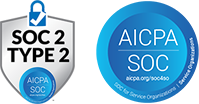What Is Absence Management?
Absence Management is the strategic approach to capturing, tracking, and analyzing all types of employee time off—scheduled (vacation, parental leave) or unscheduled (sick leave, emergencies). It leverages self-service request portals, automated policy checks, and a human resources information system (HRIS) to log each leave event accurately. Real-time dashboards surface leave trends and guide targeted interventions to sustain operational continuity and support workforce well-being.
Why Absence Management Matters
Unplanned absences can force costly overtime, reliance on temporary staff, and potential Family and Medical Leave Act (FMLA) or Americans with Disabilities Act (ADA) violations. Proactive Absence Management equips managers with predictive insights to anticipate high-leave periods, optimize staffing, and uphold service levels without overloading remaining employees.
Where Absence Management Is Used
- Healthcare: Ensures nurses and caregivers remain staffed.
- Manufacturing: Keeps assembly lines running safely.
- Retail: Balances store coverage during peak seasons.
- Professional Services: Flags understaffing risks to protect project timelines.
- Remote/Hybrid Teams: Streamlines multi–time-zone leave approvals and compliance.
Absence Management Key Benefits
- Predictive Forecasting: Schedule proactively around known high-leave windows.
- Cost Control: Target wellness and engagement initiatives where leave rates spike.
- Regulatory Compliance: Automate FMLA, ADA, and paid time off (PTO) tracking with full audit trails.
- Operational Continuity: Deploy float pools or cross-train staff to fill gaps.
- Employee Well-Being: Detect burnout or health trends early for timely support.
Best Practices & Examples
- Unified Leave Portal: Centralize all leave types—vacation, sick, personal, jury duty—in one system.
- Threshold Workflows: Trigger manager alerts after defined absence patterns (e.g., multiple unplanned days).
- Root-Cause Analysis: Segment leave data by department or tenure to pinpoint underlying issues.
- Wellness Integration: Link absence data to on-site clinics and vaccination programs.
- Manager Enablement: Train supervisors on dashboards and playbooks for consistent policy enforcement.
Conclusion
Robust absence management transforms reactive leave tracking into strategic workforce planning. By unifying request workflows, automating policy enforcement, and leveraging predictive analytics, organizations maintain compliance, reduce costs, and foster healthier, more engaged teams—preserving operational agility and freeing HR to focus on talent development.
Absence Management FAQs
Q: What is the meaning of absence management?
Absence Management is the systematic oversight of all employee leave events—planned or unscheduled—using self-service portals, automated policy checks, and analytics to log, approve, and report time off, ensuring operational continuity, cost control, and legal compliance.
Q: How do you manage absence?
Manage absence through a unified HRIS portal where employees submit leave requests, automated eligibility and policy checks occur, managers approve or deny, and payroll or accrual balances update automatically. Dashboards then forecast future needs and prompt interventions.
Q: What is absence management services?
Absence Management services are software or managed solutions that automate tracking of paid time off (PTO), sick leave, and other absences. They generate compliance reports for FMLA and ADA, analyze leave patterns, and provide dashboards for data-driven workforce decisions.
Q: What is the absence management flow?
The absence management flow begins with a self-service request, proceeds through automated policy checks and manager approval, updates HRIS and payroll systems, and concludes with return-to-work processing—complete with audit logs and automated notifications.
Q: Absence management in HRM?
In Human Resource Management (HRM), Absence Management integrates with HRIS modules to record leave events, enforce policy compliance, and link absence metrics to performance and engagement dashboards for a comprehensive view of workforce health.



